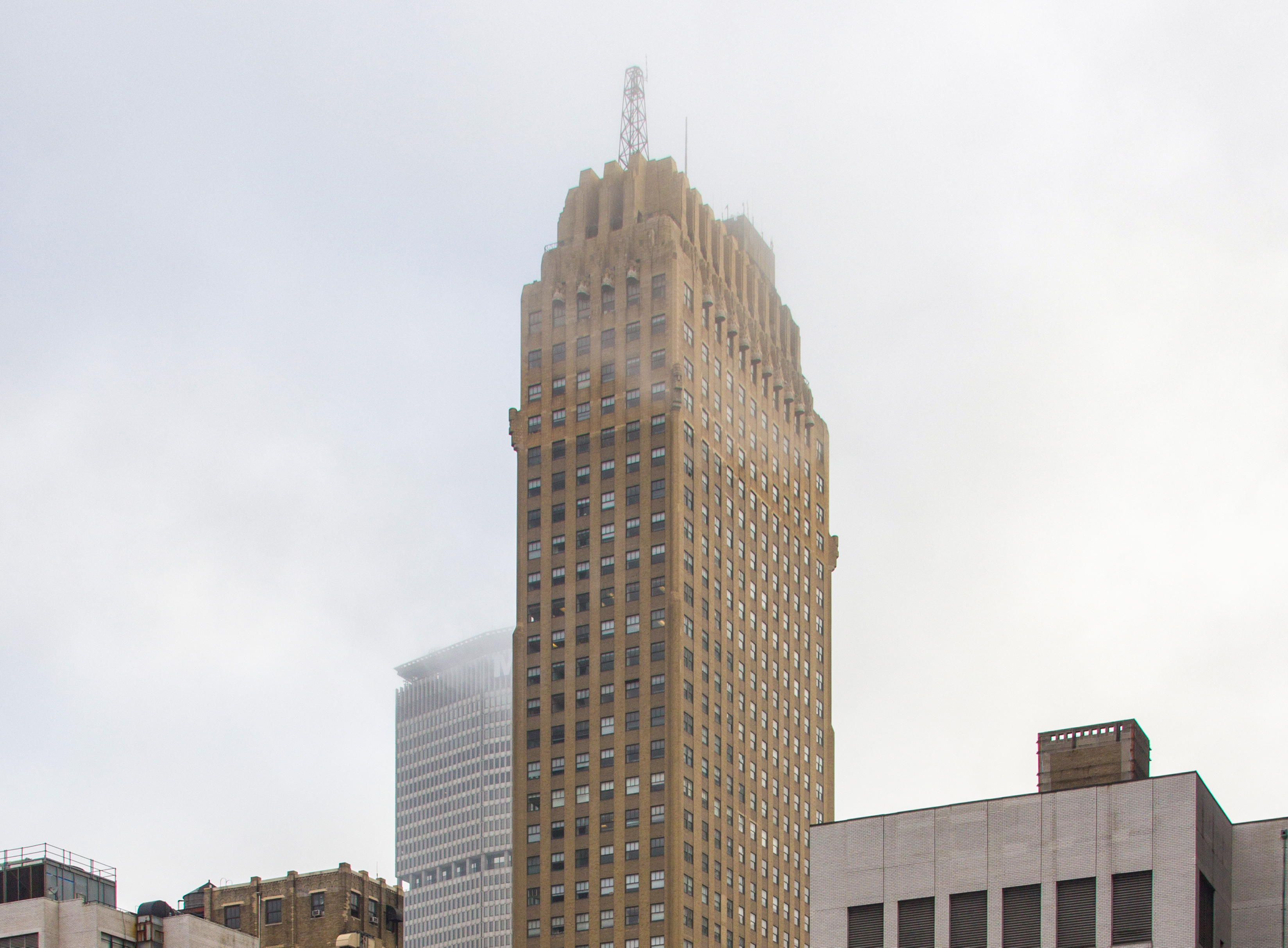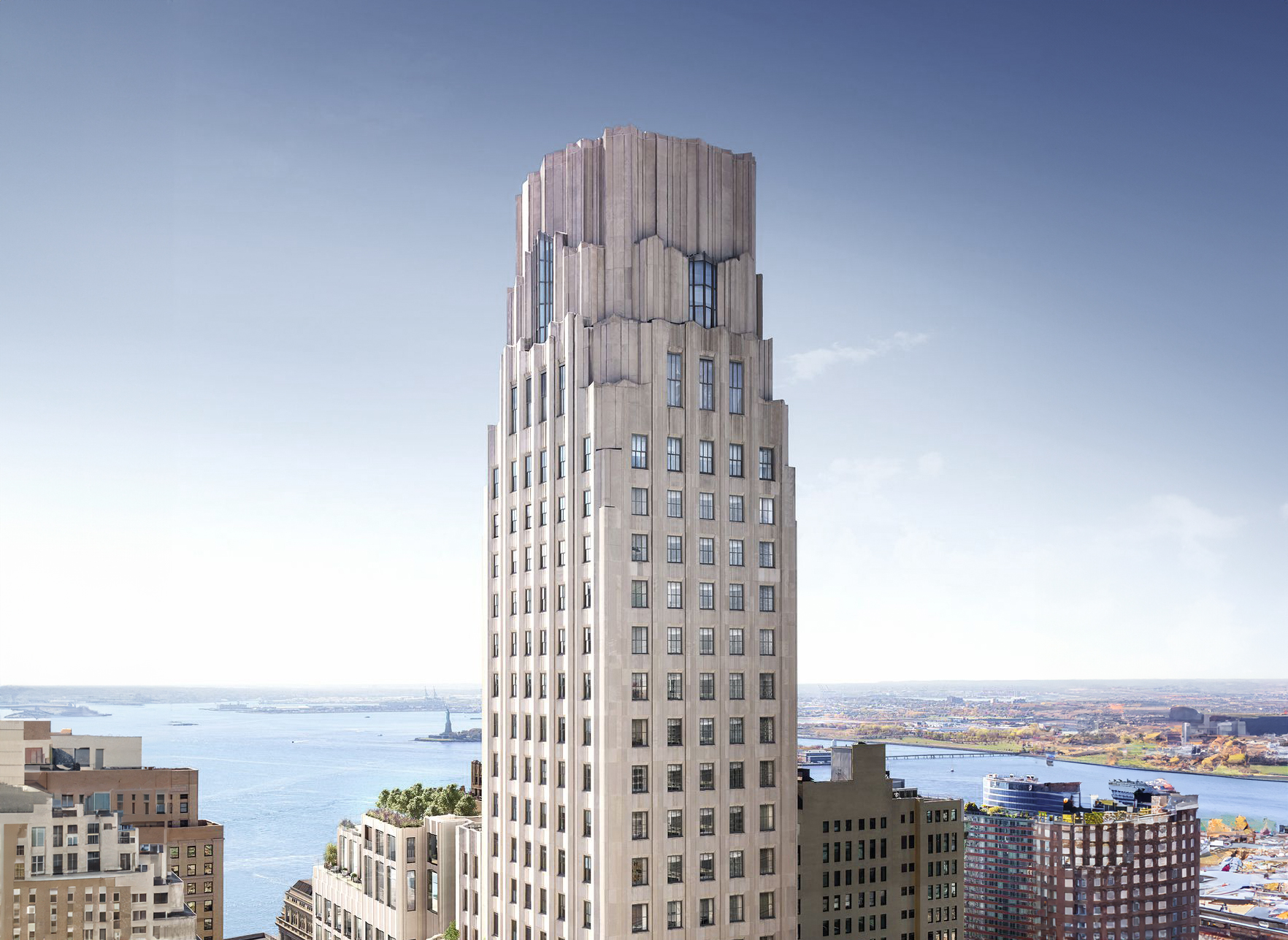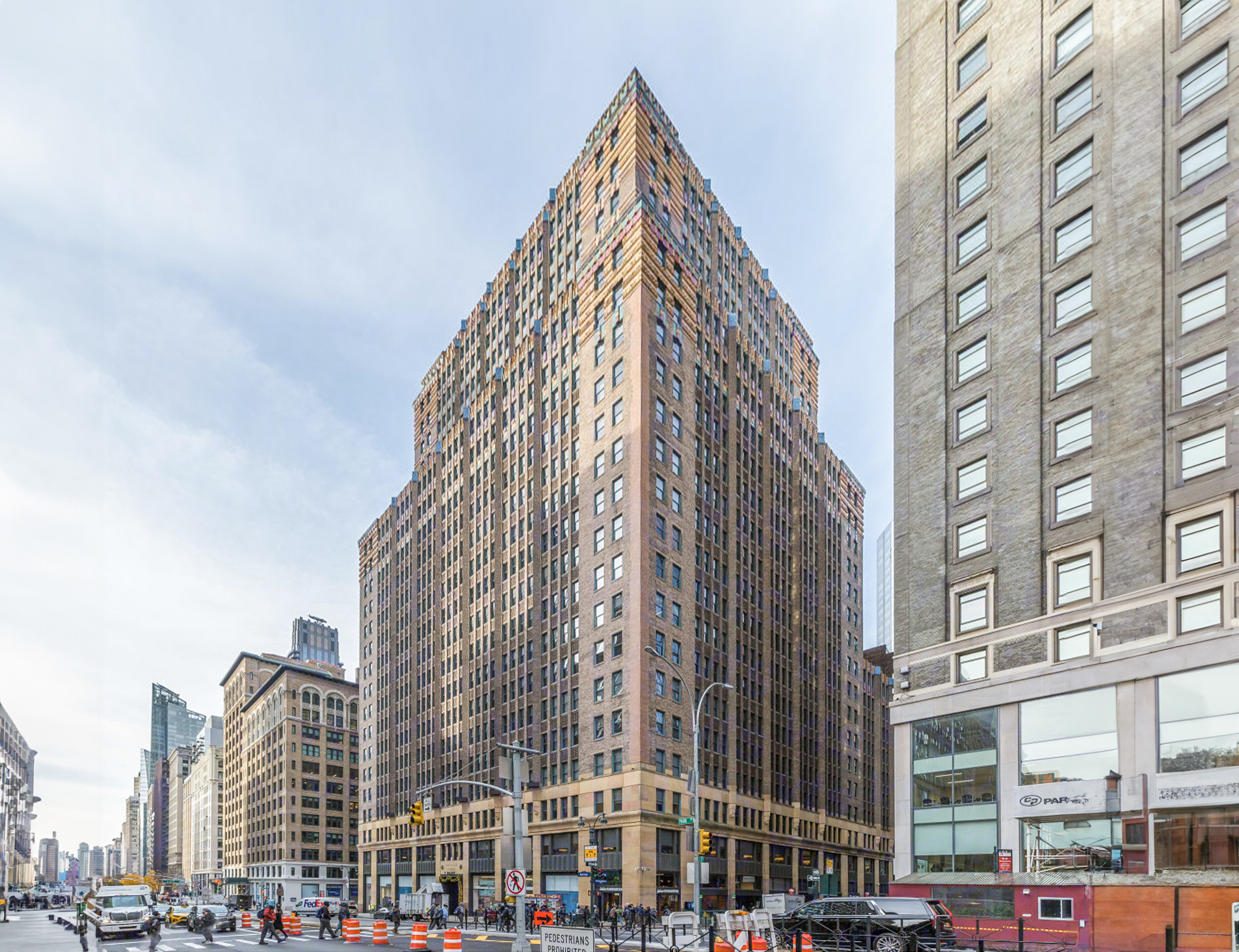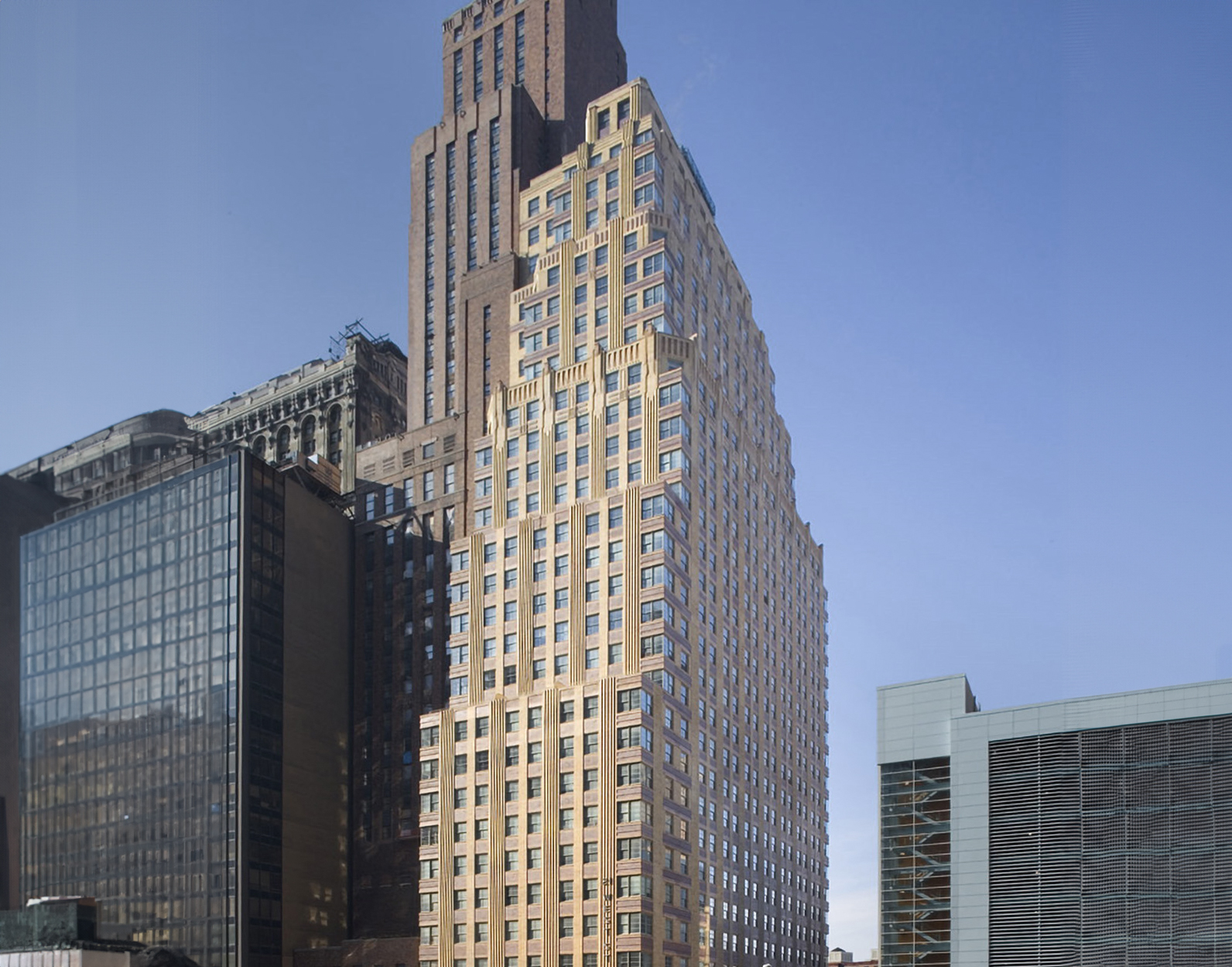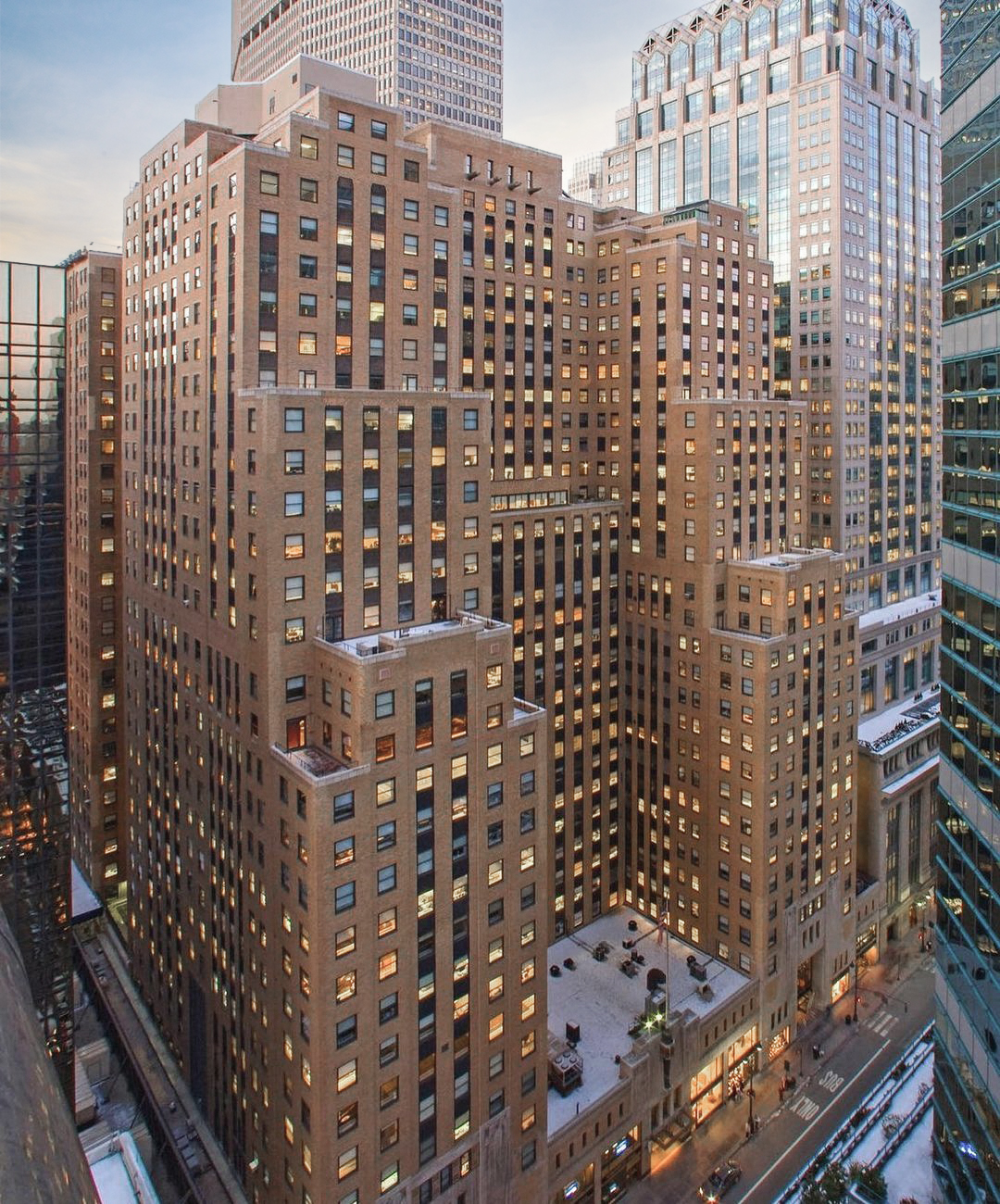The Chanin Building is an Art-deco skyscraper designed by Sloan & Robertson, and built between 1927 and 1929 in New York, NY.
Chanin Building is not the only name you might know this building by though. The building is, or has also been known as 122 East 42nd Street.
Its precise street address is 122 E 42nd St, New York, NY. You can also find it on the map here.
The Chanin Building is a structure of significant importance both for the city of New York and the United States as a nation. The building embodies the distinctive characteristic features of the time in which it was built and the Art Deco style. Because of that, the Chanin Building was officially declared as a national landmark on November 14th 1978, and was included in the National Register of Historic Places on May 23rd 1980.
At the time of its completion in 1929 the Chanin Building incorporated solutions that were quite advanced at the time, these included the self-supporting tower at the top of the building, which broadcasted FM from 1941 to 1965. Below ground, the building contained a bus terminal, a movie theater, and a connection to Grand Central Terminal.
